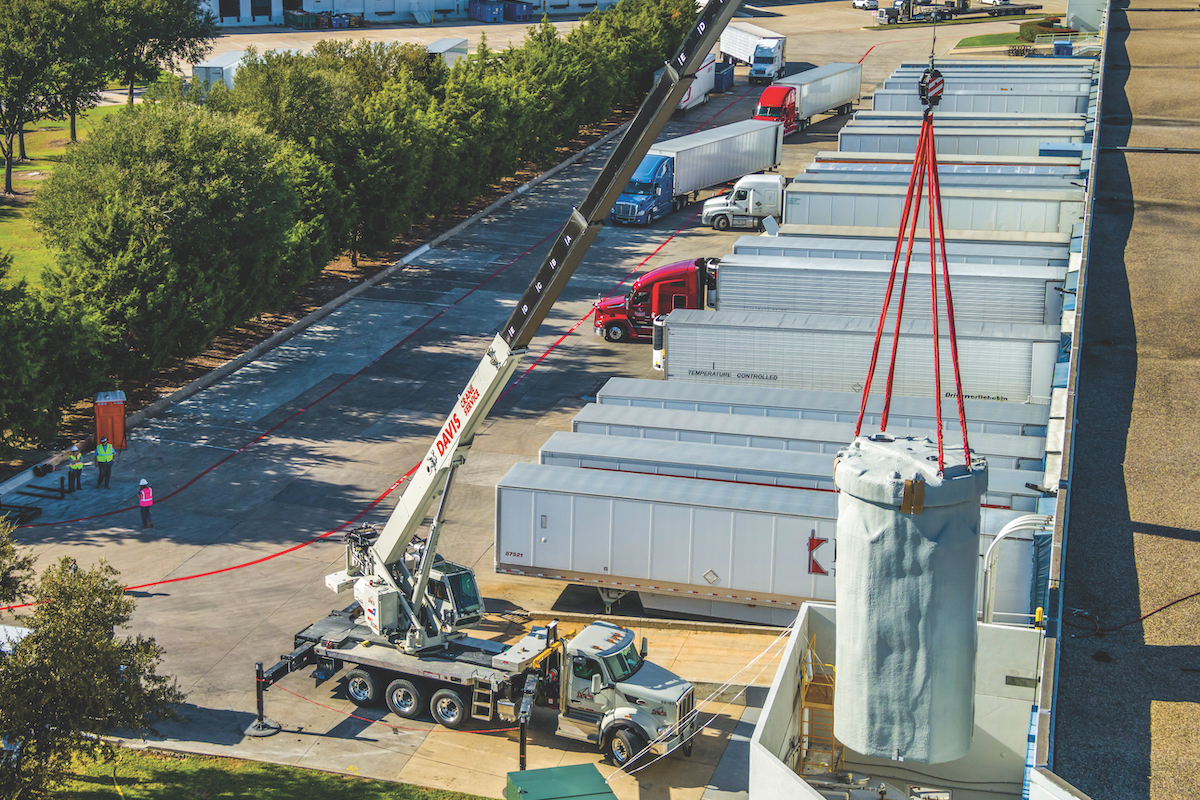It’s important to remember that a focus on sustainability means more than environmental benefits. It can also play a direct role in helping contractors reduce energy usage, improve efficiency and, as a result, increase profitability. Equipment that can run on battery power and other alternative power sources has gained popularity. However, options that create environmentally friendly solutions for diesel consumption are a critical piece of the puzzle. This is where renewable diesel takes the stage – a new diesel option that is 100 percent sustainable and renewable.
Renewable diesel is a sustainable, low-carbon biofuel derived from waste products and other biomass such as vegetable oils, greases, and natural fats. Like biodiesel, renewable diesel reduces particle emissions. But unlike biodiesel, renewable diesel is processed by treating oils with hydrogen, which removes the limitations related to reduced shelf life and cold-weather performance that first-generation biodiesel encountered.
The renewable diesel production process involves saturating feedstocks — such as vegetable oils or waste fats — with hydrogen at temperatures above 572 degrees Fahrenheit. The final step in the process is isomerization, which creates a fuel that’s almost chemically identical to petroleum diesel. This means renewable diesel can be used interchangeably with petroleum diesel without requiring additives or special blends.
Storing renewable diesel follows the same guidelines as regular oils like petroleum diesel, kerosene, and other fuel blends. Of course, these fuel storage regulations vary depending on the location and use of the tank, but typically require a UL Listed tank and a form of secondary containment. On-site fuel storage manufacturers understand these guidelines, and some have created their fuel tanks to be not only UL Listed, but also to include double-walled containment to eliminate the need for a secondary containment pan.

| Your local Wirtgen America dealer |
|---|
| Kirby-Smith Machinery |
| Nueces Power Equipment |
Renewable diesel’s clean burning properties reduce particulate production by up to 50 percent, helping to improve air quality. This is a method contractors can use to meet carbon emission targets for projects while potentially limiting the need to make other changes that might impact jobsite efficiency. This reduced particulate production also helps to improve engine cleanliness and extend the life of the machine.
Additionally, renewable diesel has a higher tolerance to cold temperatures than petroleum diesel. The chemical composition of renewable diesel gives it a freeze point of -40 degrees Fahrenheit while petroleum diesel starts to freeze at around 14 degrees Fahrenheit. At the same time, renewable diesel also has a high flash point of 140 degrees Fahrenheit, which reduces fire hazards.
Unlike first-generation biofuel options, renewable diesel does not contain oxygen, which allows a prolonged storage life of up to 10 years. In comparison, petroleum diesel can only be stored for six to 12 months.
Renewable diesel both improves sustainability and provides efficiency-enhancing benefits. However, before making the switch, check to be sure the equipment OEM has approved the use of the fuel and verify that your fuel storage solution is compatible with renewable diesel.
For example, if a fleet that consumes 10,000 gallons of fuel per week switches to renewable diesel, they can reduce their emissions by approximately 5,243 metric tons. If that same fleet adds on-site fuel storage along with renewable diesel, they can further reduce their carbon footprint by two additional metric tons per year. This is based on standard MPG calculations for fuel delivery trucks, and reducing weekly site fuel drops from five to one.

| Your local LeeBoy dealer |
|---|
| ASCO Equipment |
| Closner Equipment Co Inc |
| Romco Equipment Co |
| Bee Equipment Sales Ltd |
Using on-site storage tanks with a fuel management system also allows contractors to track fuel usage, which delivers accountability for every drop of fuel. Some on-site fuel tank manufacturers also offer personalized alerts for situations like above-average consumption rates, overfill incidents and more. These customizable reports and alerts are sent as emails or texts and help ensure efficient use of this resource.
Although petroleum diesel is still predominant, environmental trends and the benefits that come with this new fuel solution indicate this is just the start for renewable diesel in North America. Contractors can prepare for the future by partnering with manufacturers who offer the flexibility to use either petroleum diesel or renewable diesel for their fleet.
By partnering with an on-site fuel storage solutions provider who is familiar with fuel trends and storage compatibility, contractors take further control of their fuel supply. With flexible storage solutions, they can be ready to use the best diesel option for their application while reducing emissions during transport and refueling, no matter which type of fuel they choose.
When the time comes, having on-site fuel tanks that are renewable diesel ready will make the switch as seamless as possible so the contractor can quickly reap the efficiency and sustainability benefits that renewable diesel provides.





































































